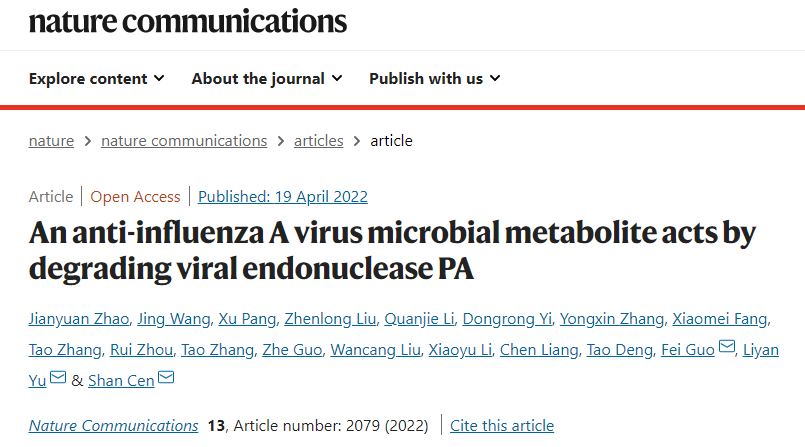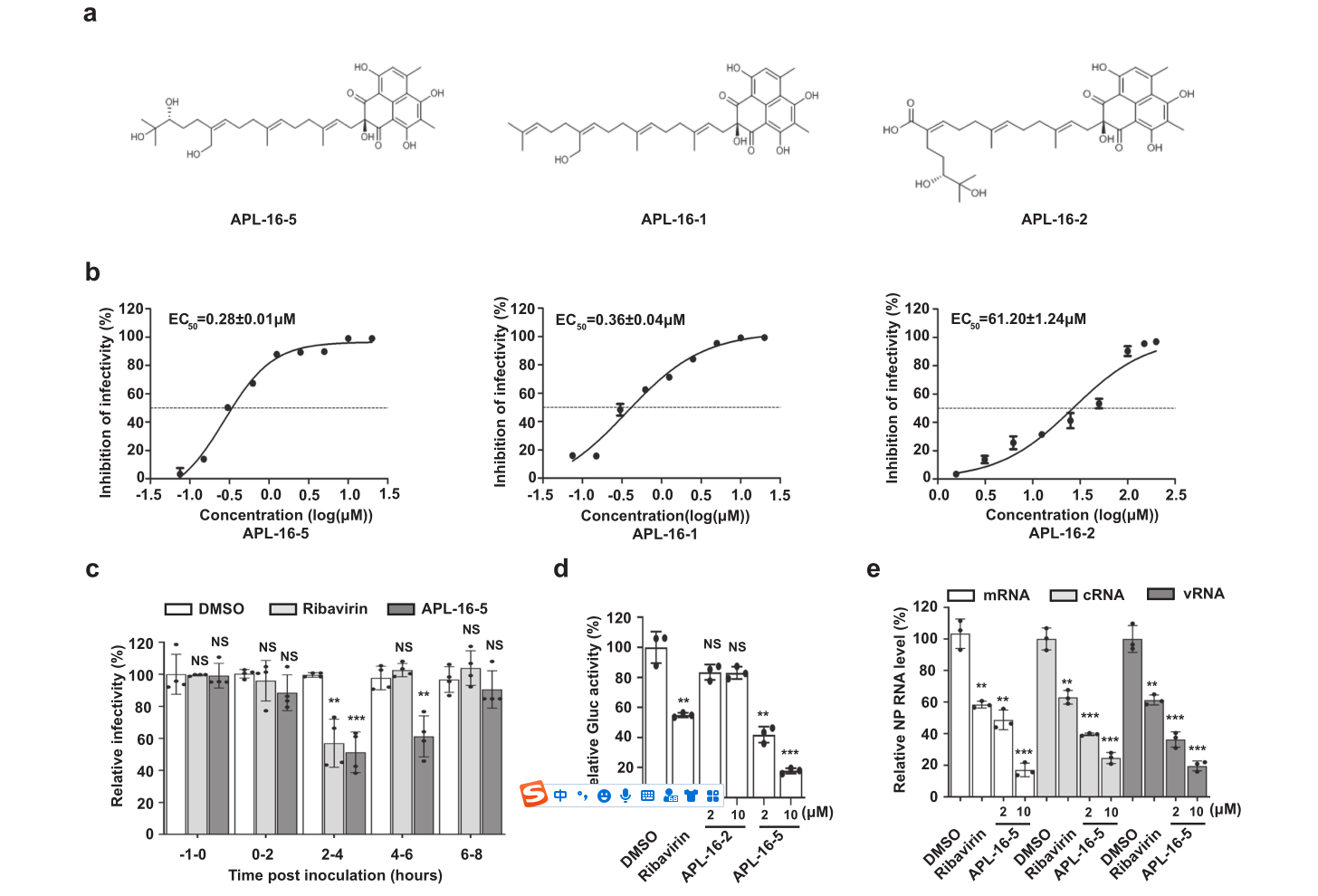Nature Communications:The first microbe PROTAC molecule have been discovered by Cen Shan, Yu Liyan, and Guo Fei
Source: IMB
time:2022-04-24
Views:
On April 19, 2022, Nature Communications online published the article entitled of “Antimicrobial acts of An anti-influenza A virus by degrading viral Endonuclease PA”. The co-corresponding authors are Prof. Cen Shan and Prof. Liyan Yu from Institute of Medical Biotechnology, Chinese Academy of Medical Sciences, and Prof. Fei Guo from Institute of Pathogen Biology, Chinese Academy of Medical Sciences.

In this study, it was found that microbial secondary metabolite APL-16-5 simultaneously binds to E3 ubiquitin ligase TRIM25 and influenza virus PA subunit. This compound induces TRIM25-dependent PA ubiquitination and degradation based on the PROTAC mechanism, resulting in blocking viral RNA replication, and exhibits potent anti-influenza A virus activity in vivo . APL-16-5 is the first PROTAC (Proteolysis-Targeting Chimera) molecule derived from microbial natural products.
APL-16-5 was generated by the plant endophyte fungus Aspergillus sp. CPCC 400735, which was preserved in the China Pharmaceutical Culture Collection.
As a highly effective antiviral PROTAC molecule in vivo , APL-16-5 has the potential to be developed as a novel anti-influenza drug to solve the current problem on antigenic drift and drug resistance of influenza virus. In particular, this study for the first time proposed and verified that TRIM25 could be used as a new E3 ubiquitination ligase for the application of PROTAC technology. Given that the TRIM superfamily is one of the largest E3 ubiquitination ligase families (nearly 80 members), its application in drug discovery has the potential to greatly expand the development potential of PROTAC technology. Meanwhile, APL-16-5 and its derivatives can be used as TRIM25 ligands to promote the design of new PTOTAC molecules based on TRIM25 and further expand its application.

Shan Cen, Liyan Yu and Fei Guo are the co-corresponding authors, and Jianyuan Zhao, Jing Wang and Xu Pang are the co-first authors. The research was collaborated by Guo Fei's team and Deng Tao's team from Institute of Microbiology, Chinese Academy of Sciences.
The research was supported by the National Natural Science Foundation of China, the National Microbial Resource Center, the CAMS Collection Center of Pathogenic Microorganisms and National Key Research and Development program of China, CAMS Innovation Fund for Medical Sciences, and Fundamental Research Funds for the Central Universities.




